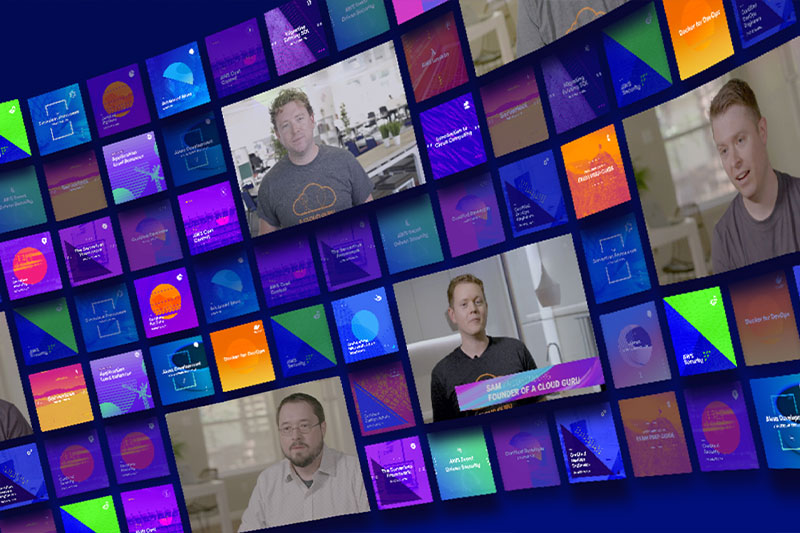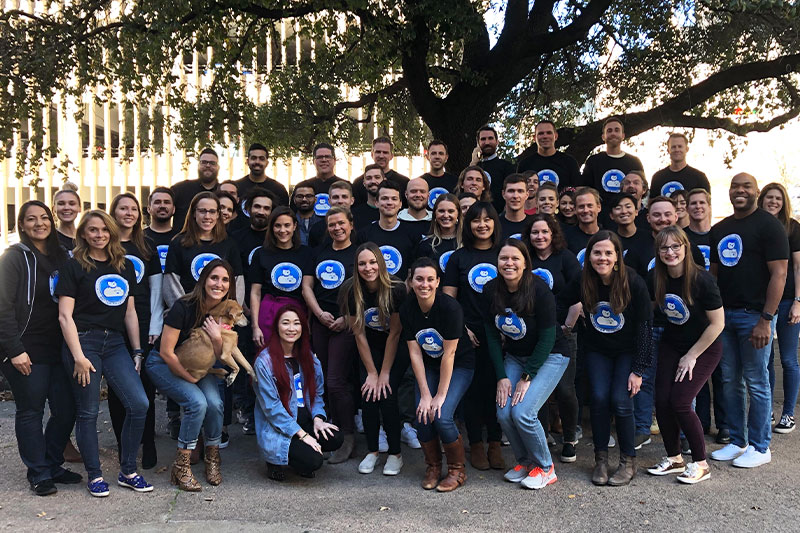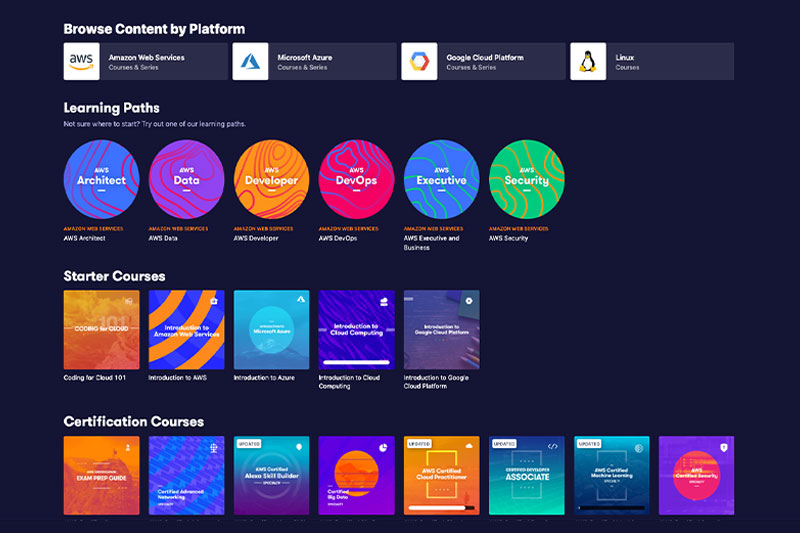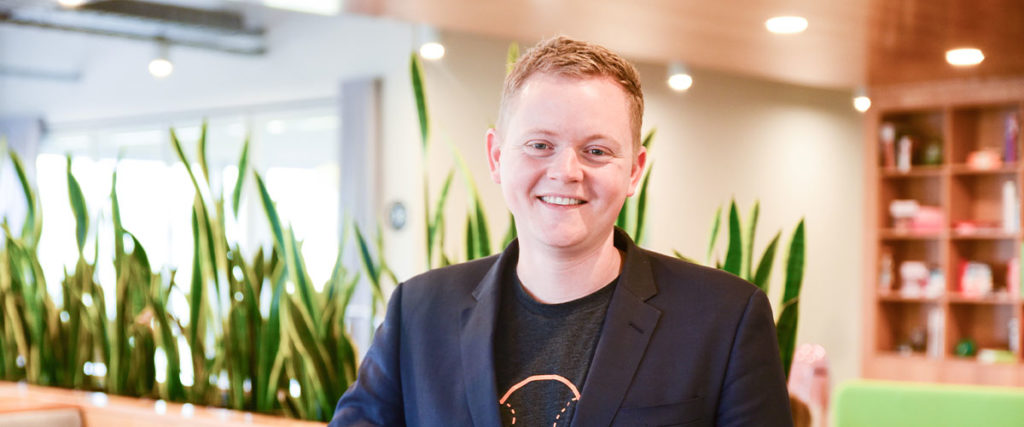Software engineer Sam Kroonenburg, co-founder of A Cloud Guru, has raised USD 40 million to pave the way to a future built on cloud computing, training thousands of engineers as he goes.
It was an unsuccessful job application and a rejection from Amazon that first spurred two brothers, Sam and Ryan Kroonenburg, to revolutionise the world of cloud computing back in 2015, launching a subscription-based online training platform in cloud computing called A Cloud Guru. Frustrated at the unmistakable lack of information accessible to the general public, they sought to create a solution that was “accessible, affordable, always up-to-date – and fun,” says Sam. “We just thought, there’s got to be a better way.” Four years down the line, the duo has taught over 1.5 million students in 200 countries across the world, trained thousands of engineers at Dow Jones, Accenture, and Version, raised USD 40 million in investor funding, and have even acquired competitor Linux Academy in late 2019 to expand their offering.

So how did it all begin? An ex-Microsoft software engineer by trade, Sam explains how he’d been building software since he was 13 – and so, when his brother had a brilliant idea for a startup, they put their heads together to make it a reality. “We needed to build a real platform, but we didn’t have any time to do it. I was working full-time,” Sam remembers. “We were going to have our first family holiday – just me, the wife and kids. But, my wife encouraged me. She saw the look in my eyes and said, ‘We’ll cancel the family holiday and go live with my parents for four weeks.’ So, that’s what we did. Ryan and I launched A Cloud Guru about a month later and the rest is history.”
Currently one of the hottest trends in technology, cloud computing has sparked the interest of CEOs, senior managers, software engineers and even startups, promising to unlock a new realm of cost-efficiency for businesses. “You just pay for what you use by the minute or by the second. If you don’t have customer demand at a particular time, you’re not paying for it,” Sam explains. “I can get access to computing power that could run an algorithm on data the size of the human genome without having to pay any upfront costs. To do that in the past, you had to afford supercomputers.” However, the industry still faces a massive skills gap. “71% of CIOs have a mandate to go into the cloud, but only 17% of organisations say that they actually have the skills needed to get there,” Sam explains, which is where A Cloud Guru comes in, allowing software engineers to continually upskill in line with the industry’s constant innovation. “You’re building on top of Amazon, Microsoft and Google services, but these change all the time, so traditional education doesn’t work. The cloud platforms are changing every day, so the training needs to change every day.”
You might also like Tech Startup DigitalOcean: The Secret To Becoming A Unicorn

A Cloud Guru attributes its success to a simple approach: “We wanted to make training that was accessible, affordable, always up-to-date – and fun,” Sam explains. “I always say, ‘Why does training have to be boring?’ So we very purposefully set out to make the platform feel more like Netflix than a corporate training portal. We do web episodes, silly jokes. We have cool graphics, a fun app, and album artwork for the training.” Their website jokes, tongue-in-cheek, “We never inflict death by PowerPoint.” It’s a strategy that’s worked; 50% of students on A Cloud Guru hop on the training platform either every day or every week.
Yet, aside from their strong product-market fit, Sam also believes their success lies in timing. As a co-founder working in an industry that’s evolving on a daily basis, he reflects, “I think you always hear these stories about founders in their early 20s or late teens, like Mark Zuckerberg, and it’s kind of like, if you haven’t made it by the time you’re in your mid-20s, then you’re not going to make it. But, for me, I needed that time in my 20s to learn about the industry, learn how to build robust software and learn how to sell to the clients. All the work leading up to my 30s prepared me to start A Cloud Guru. I knew what makes a good product, what makes a good company that you want to work for, what’s a good culture, and how do you build a robust platform.”

Offering everything from beginner courses to advanced certification programmes in Amazon Web Services (AWS), Microsoft Azure, Google Cloud and Linux Cloud, A Cloud Guru creates all their content in-house, tailoring their teaching to slot neatly into the hectic life of a working professional. “Basically, every lesson has to be under 20 minutes. People don’t have a lot of time, and if training is going to be something you do continuously throughout the year, it’s got to be something you can fit into your life, whether that’s on your lunch break or on your commute,” Sam says. They promise to help people get results fast. When it comes down to going from knowing nothing about the cloud to landing a job, “I’ve seen people do it in three months or less,” he shares.
Since major cloud platforms are continually developing their offerings, firms reap the benefits of faster, more efficient, and more powerful computing – all without needing to lift a finger. “When you tap into the cloud, you’re tapping into all these incredible capabilities that these companies have but they’re not standing still. They’re adding new capabilities all the time, upgrading it behind the scenes. It’s improving all the time,” Sam concludes.

Further into the future, cloud computing is set to continue to expand rapidly. “Artificial intelligence and machine learning are going to change a lot of things. A lot of intelligence is going to come from the major companies like Amazon, Microsoft and Google who can throw very significant computing power at them,” Sam predicts. Edge computing, too, will be a major development to look forward to, connecting powerful centralised data centres – and their substantial computing power – with machinery out in the real world, enabling them to make intelligent decisions in real-time. “I think we’re going to see a much bigger focus on building those edge capabilities that then have the ability to link back to the cloud for longer-term or deeper intelligence processing. In the future, everything from microwaves and kettles to heavy machinery will be much smarter. Everything will be connected together.”
Related Articles
Don’t Fear Artificial Intelligence. It’s Here to Help
Candy Crush Creator Talks on the Future of Mobile Gaming
Should You Be Digitalising Your Business Cards? This Unicorn Startup Thinks So.





